Solar-powered light bulbs are a popular way to illuminate your garden pathways, walkways, or landscaping during the night. Not only do solar lights enhance the beauty of yards and outdoor areas, but they also help conserve electricity.
A solar light bulb consumes around 2-18 watts of power, depending on its style, type, and brand.
Homeowners can choose a robust and reliable Jackery Solar Generator to charge solar light bulbs. They are cost-effective and eco-friendly charging solutions for all small and large appliances, including light bulbs.
In this guide, we will reveal everything related to solar-powered light bulbs and how to charge them using solar generators.
What Is A Solar Powered Light Bulb?
Solar lights are devices that capture the sun's energy using solar cells. The PV solar panels convert sunlight into electricity. The wires connect the solar panel to the battery that stores the generated energy for later use.
When the darkness falls, the rechargeable battery (often made of lithium ions) powers the light bulb. The light-emitting semiconductor diode allows electrons to pass between the two points, creating electromagnetic energy.

Some of the main benefits of outdoor solar lighting include the following:
- Long Lasting: Thanks to the combination of solar panel technology and LED bulbs, solar-powered lights last longer than other types.
- Cost Saving: Since solar lights rely on sunlight, they won't increase electricity bills.
- Suitable For Outdoors: Solar lights are pretty portable. That being said, you can install them anywhere in your outdoor space.
- Illumination During Power Outages: Even if there is a blackout in your area, the solar lights will still work due to the sun's energy.
- Eco-Friendly: Unlike power sources that use fossil fuels, solar lights are powered by renewable energy. Hence, they are an eco-friendly option.
Solar Powered Light Bulb Vs. Solar Generator For Light Bulb
When it comes to charging light bulbs using solar energy, you have two options available: a solar-powered light bulb or a solar generator. Both are popular options for people wanting to light their space with clean and green energy.
While solar-powered light bulbs are easy to install and portable, they may not be as bright as traditional ones. Choosing a solar generator for light bulbs ensures you can power multiple light bulbs and other electrical devices simultaneously.
Let us quickly compare the two charging solutions below.
|
Types |
Pros |
Cons |
|
Solar Powered Light Bulbs |
- Portable and easy to install. - Cost-effective power solution. - Carbon-free lighting source. |
- Less efficient during cloudy days or in winter. - Low light compared to traditional power sources. |
|
Solar Generator for Light Bulbs |
- Powerful enough to charge multiple other appliances. - Can power appliances even during cloudy days or winter with its fully charged portable power station. - Convert maximum sunlight into electricity compared to solar-powered lights. |
- High cost compared to solar-powered light bulbs. |
Solar Powered Light Bulbs
As mentioned above, a solar-powered light bulb absorbs the sun's energy during the day and stores it in the battery. Once the sun sets, the battery supplies electricity to the solar lights for illumination. Some of the common uses of solar-powered light bulbs include:
- Lighting your yard
- Illuminating steps or paths
- Decorating your garden
- Providing a security light to protect outdoor space from intruders
Pros
- The high-quality solar power lights help you with carbon-free lighting for your home and outdoor space.
- They can help you to conserve energy and reduce electricity bills.
- Solar lights can be used for indoor and outdoor purposes.
Cons
- It may not be as bright as traditional light bulbs.
- It may require the replacement of rechargeable batteries.
Solar Generator For Light Bulbs
Unlike solar bulbs, solar generators for light bulbs are more powerful. Not only can it help you power multiple light bulbs, but it can be a great savior during power outages and blackouts.
You can use Jackery Solar Generator to power light bulbs. It consists of SolarSaga solar panels and Explorer Portable Power Station that absorb sunlight to charge appliances like light bulbs.

A solar generator is an ideal choice for light bulbs as it is eco-friendly, efficient, and quiet. For those who want to power small devices like solar light bulbs, Jackery Solar Generator 240 v2, Jackery Solar Generator 300 Plus, and Jackery Solar Generator 600 Plus are suitable choices.
Pros
- The pass-through charging feature of the solar generator allows you to power devices while keeping the solar generator plugged in for charging.
- Unlike traditional power sources, solar generators emit no fumes. Thus, they are safe for indoor use.
- The lightweight and portable nature of solar generators makes them easy to carry during outdoor adventures.
- The high power capacity of the solar generator helps you charge not only light bulbs but also other home appliances during off-grid living.
Cons
- They are more expensive compared to solar-powered light bulbs.
How Many Watts Does A Solar Light Bulb Use?
A watt hour is the unit of energy commonly used to indicate the consumption of one watt of power expended for one hour.
On average, an LED light bulb solar-powered uses 10 watts of power. However, the exact wattage might differ depending on size, manufacturer, and other factors. You can find the wattage of your LED light bulb on the device or in the user manual.
How Much Does It Cost To Power A Light Bulb?
The cost to power a light bulb will depend on the watt consumption, the energy rate, and how many hours you use the bulb.
Suppose the LED light bulb consumes 10 watts of power and runs for 5 hours per day. Then, the power consumption will be:
Power = 10 watts × 5 hours / 1000 = 0.05 kWh.
That said, a light bulb will consume 0.05 kWh in one day. The exact cost for 0.05 kWh usage will depend on the electricity rate of your location.
Here is an average cost calculation for a LED light bulb in the US that uses 10 watts of energy and runs for 5 hours daily.
|
|
Usage in kWh |
Cost in $ |
|
Per day |
0.5 |
$ 0.005 |
|
Per month |
1.52 |
$ 0.15 |
|
Per year |
45.6 |
$ 1.83 |
How Much Solar Power Does A Light Bulb Need?
The solar power of a light bulb depends on the watts consumed by the appliance and the time it runs.
A light bulb that uses 5 W of energy and runs for 8 H will consume around 40 Wh of power. If you are using more than one light bulb, you can calculate the power consumption of each bulb and add them to find the total energy usage.
|
Product |
Watts |
Length of Time |
Daily Power Consumption |
|
1*Light Bulb |
2-18W |
5 hours |
10-90 Wh |
|
2*Light Bulbs |
4-36W |
5 hours |
20-180 Wh |
|
4*Light Bulbs |
8-72W |
5 hours |
40-360 Wh |
Jackery Solar Generator For Light Bulbs
Solar light bulbs are gaining immense popularity as the clean energy source helps you to reduce carbon emissions and save money on high electricity bills. However, it's vital to choose the ideal generator that can power up multiple bulbs and keep them running for long hours.
Jackery Solar Generators are suitable for people looking to choose a reliable power solution for their electrical devices. It is easy to install, and you can carry the solar generator easily. Depending on the number of light bulbs you want to power, you can choose from different Jackery solar power generator models available.

For instance, if you want to use 2 or 3 light bulbs for a night, you can opt for Jackery Solar Generator 300 Plus with a battery capacity of 288Wh. On the other hand, you can buy Jackery Solar Generator 1000 v2 to power light bulbs and other appliances.
Below we compare some of the highly recommended Jackery Solar Generators.
|
Series |
Capacity |
Ports |
Light Bulbs Watts |
Hours |
|
Jackery Solar Generator 240 v2 |
256Wh |
AC Output (x1): 120V~ 60Hz, 2.5A, 300W Rated, 600W Surge peak USB-A Output (x1): 15W Max, 5V⎓3A Max USB-C Output (x1): 15W Max, 5V⎓3A Max USB-C Output (x2): 100W Max, 5V⎓3A, 9V⎓3A, 12V⎓3A, 15V⎓3A, 20V⎓5A Car Port (x1): 12V⎓10A |
1*Light Bulb 2-18W 2*Light Bulb 4-36W 4*Light Bulb 8-72W |
1*Light Bulb 12-108 hours 2*Light Bulb 6-54 hours 4*Light Bulb 3-27 hours |
|
Jackery Solar Generator 300 Plus |
288Wh |
AC Output (x1): 120V, 60Hz, 300W (600W Peak) USB-A Output (x1): 15W Max 5V⎓3A USB-C Output (x1): 15W Max 5V⎓3A USB-C Output (x2): 100W Max, 5V⎓3A (5V, 9V, 12V, 15V, 20V up to 5A) Car Port (x1): 12V⎓10A |
1*Light Bulb 2-18W 2*Light Bulb 4-36W 4*Light Bulb 8-72W |
1*Light Bulb 13-122 hours 2*Light Bulb 7-61 hours 4*Light Bulb 3-31 hours |
|
Jackery Solar Generator 600 Plus |
632Wh |
AC Output (x2): 120V~ 60Hz, 6.67A USB-A Output (x1): 18W Max, 5-6V⎓3A, 6-9V⎓2A, 9-12V⎓1.5A Car Port (x1): 12V⎓10A Max USB-C1 Output: 30W Max, 5V⎓3A, 9V⎓3A, 12V⎓2.5A, 15V⎓2A, 20V⎓1.5A USB-C2 Output: 100W Max, 5V⎓3A, 9V⎓3A, 12V⎓3A, 15V⎓3A, 20V⎓5A |
1*Light Bulb 2-18W 2*Light Bulb 4-36W 4*Light Bulb 8-72W |
1*Light Bulb 30-268 hours 2*Light Bulb 15-134 hours 4*Light Bulb 7-67 hours |
|
Jackery Solar Generator 1000 v2 |
1070Wh |
AC Output (x3): 120V ~ 60Hz USB-A Output (x1): 18W Max 5-6V⎓3A, 6-9V⎓2A, 9-12V⎓1.5A Car Port (x1): 12V⎓10A USB-C1 Output: 30W Max 5V⎓3A, 9V⎓3A, 12V⎓2.5A, 15V⎓2A, 20V⎓1.5A USB-C2 Output: 100W Max 5V⎓3A, 9V⎓3A, 12V⎓3A, 15V⎓3A, 20V⎓5A |
1*Light Bulb 2-18W 2*Light Bulb 4-36W 4*Light Bulb 8-72W |
1*Light Bulb 50-454 hours 2*Light Bulb 25-227 hours 4*Light Bulb 12-113 hours |
|
Jackery Solar Generator 1000 Plus |
1264Wh |
AC Output (x3): 120V~60Hz, 2000W (4000W Peak) USB-A Output (x2): 18W Max, 5-5V⎓3A USB-C Output (x2): 100W Max, (5V, 9V, 12V, 15V, 20V up to 5A) Car Port (x1): 12V⎓10A |
1*Light Bulb 2-18W 2*Light Bulb 4-36W 4*Light Bulb 8-72W |
1*Light Bulb 60-537 hours 2*Light Bulb 30-268 hours 4*Light Bulb 15-134 hours |
|
Jackery Solar Generator 2000 Plus |
2042.8Wh |
AC Output (×4):120V~ 60Hz, 20A Max AC Output (×1):120V~ 60Hz, 25A Max USB-A Output (x2): Quick Charge 3.0, 18W Max USB-C Output(x2): 100W Max, (5V, 9V, 12V, 15V, 20V up to 5A) Car Port (x1): 12V⎓10A |
1*Light Bulb 2-18W 2*Light Bulb 4-36W 4*Light Bulb 8-72W
|
1*Light Bulb 96-868 hours 2*Light Bulb 48-434 hours 4*Light Bulb 24-217 hours |
Solar Powered Light Bulbs FAQs
What size of solar generator do I need to power light bulbs?
As light bulbs require less number of watts to work, you can charge them using a small size solar generator. However, the exact size will depend on the watts one light bulb consumes, the usage time, and the number of light bulbs you wish to power.
Let us assume that you are using Jackery Solar Generator 600 Plus, which has a battery capacity of 632Wh.
Working time = 632Wh * 0.85 / operating wattage of your device.
If one light bulb consumes 10 watts of power and you want to charge 5 similar light bulbs, the total power consumption will be 10 watts * 5 = 50 watts.
Working time = 632Wh * 0.85 / 50 = 10.7 hours.
Note: The pass-through feature ensures that you can power the generator and the electrical devices simultaneously. Thus, you can never go out of power if you have a Jackery Solar Generator by your side.
How many solar light bulbs do I need?
The number of solar lights will depend on the amount of outdoor space you wish to illuminate. Then, you can measure the distance between the existing lights, bushes, and trees. Now, calculate the amount of square footage that each bulb can illuminate. Finally, divide the number by the overall square footage to calculate the total number of solar light bulbs required.
Can I charge light bulbs on cloudy days, in winter, or without the sun?
Absolutely! A fully charged portable power station can power most of your home appliances, including light bulbs, even on cloudy days, during winter, or without sunlight. Jackery Solar Generators combine highly efficient solar panels with portable power stations, maximizing sunlight conversion and energy storage for reliable power anytime.

Final Thoughts
Solar-powered light bulbs are an excellent choice to illuminate your outdoor spaces or areas without electricity access. Instead of investing in solar light bulbs with in-built panels, you can choose a solar generator. Besides light bulbs, the solar generator allows you to charge other appliances like refrigerators, AC, mini coolers, electric blankets, or whatever you name it.
Jackery Solar Generator 300 Plus is one of the most popular solar charging solutions for small and midsize outdoor appliances. It is portable and lightweight, making it perfect for carrying during outdoor adventures like camping, hiking, etc. Subscribe to the Jackery newsletter to get news related to products, promotional offers, and other deals in your inbox.

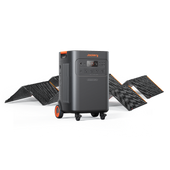











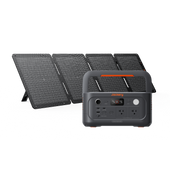





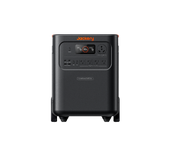
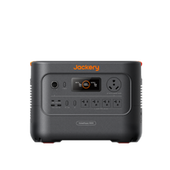





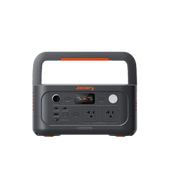





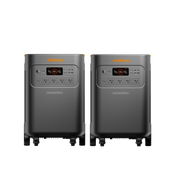
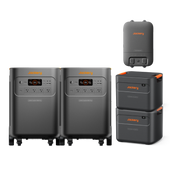





![[Add - on] Jackery Manual Transfer Switch for Explorer 5000 Plus - Jackery](http://www.jackery.com/cdn/shop/files/add-on-jackery-manual-transfer-switch-for-explorer-5000-plus-9017324.png?v=1754016782&width=170)

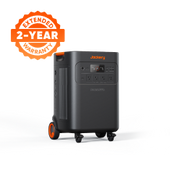
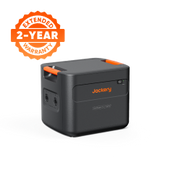
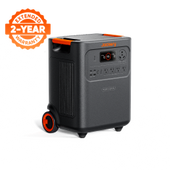
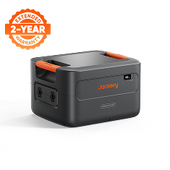
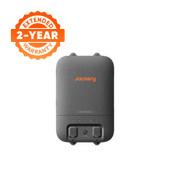



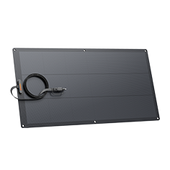
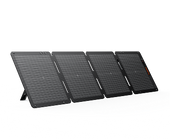




















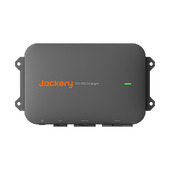




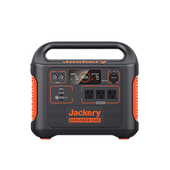







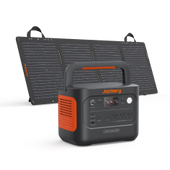
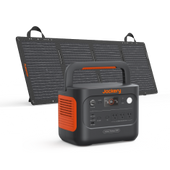





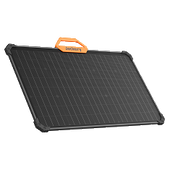
















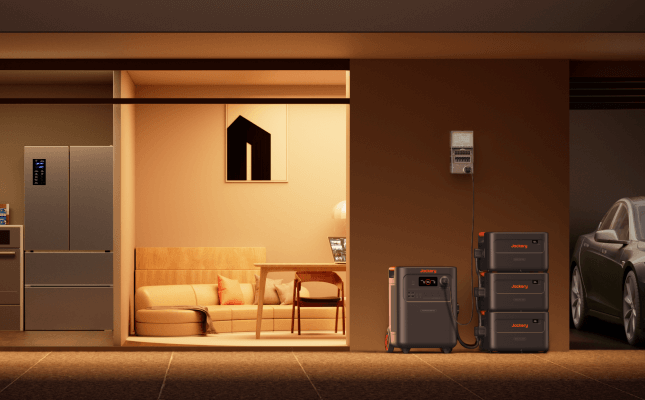


























Leave a comment